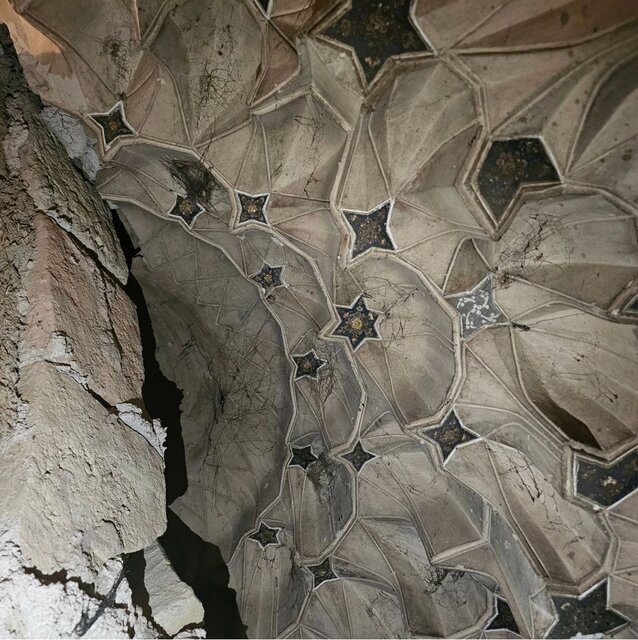Safavidera mihrab discovered in Isfahan mosque
Safavid-era mihrab discovered in Isfahan mosque
TEHRAN - In Isfahan, a significant discovery has been made during the restoration of the western prayer hall of the historical Sorkhi Mosque.

A rare mihrab, hidden for centuries, has emerged during restoration efforts, according to Seyyed Rouhollah Seyyed Alasgari, the deputy tourism chief of Isfahan province.
Seyyed Alasgari on Tuesday explained that the rediscovered mihrab is the mosque's original prayer niche dating back to the Safavid period, ISNA reported.
Covered during the Qajar era, this mihrab had been concealed to make way for a smaller, new Qajar-era mihrab that was aligned with slight adjustments to the qibla, the direction Muslims face during prayer.
“Fortunately, the Safavid mihrab was not destroyed but was instead covered by the Qajar modifications,” Seyyed Alasgari noted, adding that the newly discovered structure has remained largely intact beneath the later addition.
The Sorkhi Mosque, a cherished Safavid monument, was registered as a national historical site in 1936 under registration number 275.
Located on Isfahan's Chaharbagh-e Paeen Street in the Sorkhi Mosque Alley, it was constructed in 1014 AH (1605-1606 CE) by an individual named Khalaf, a servant of Shah Abbas I. The mosque’s original name, “Sofrechi Mosque,” eventually shifted to “Sorkhi Mosque” due to the distinctive red bricks used in its dome.
The mosque also features an entrance inscription in thuluth script on white and cobalt blue mosaic tiles, indicating its construction year, and a water basin on the western side with an inscription dated 1117 AH (1705-1706 CE), further attesting to the building’s historical significance.
A mihrab is a niche in the wall of a mosque or religious school (madrasa) that indicates the direction of Mecca (qibla), which Muslims face when praying. It is the architectural and symbolic focal point of religious buildings.
A mihrab is usually decorated with inscriptions on a background of cobalt blue, turquoise, golden yellow, white, and dark green tile mosaic. The outermost rectangular band contains cursive verses from the Holy Quran.
The frame around the niche is generally decorated with arabesque designs outlined in blue and interspersed with floral blossoms. Moreover, it usefully bears an inscription from the hadith (sayings of the Prophet Muhammad, PBUH), written in angular kufic script.
AM
source: tehrantimes.com